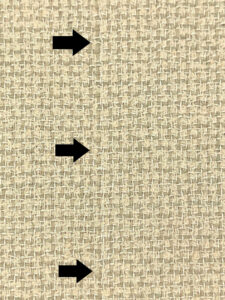Black Nylon vs. Black Microfiber: Can You Mix These Fabrics?
Introduction
Fabric compatibility is crucial in fashion and sewing, affecting both the final look and functionality of garments. Black nylon and black microfiber are popular choices, each with unique properties. This article explores their compatibility, offering insights into how they work together, or if they should be kept apart.
Compatibility Analysis
Can You Mix Black Nylon and Black Microfiber? Yes, But with Considerations
Black nylon and black microfiber can indeed be mixed, but it’s essential to understand their differences. Both are synthetic, yet they vary in texture, weight, and care requirements. Nylon is known for its strength and elasticity, while microfiber is celebrated for its softness and moisture-wicking properties. When combined, they can create visually interesting and functional garments, but attention to detail is necessary to address potential challenges.
Fabric Properties Comparison Table
| Property | Black Nylon | Black Microfiber |
|---|---|---|
| Fiber Content | Synthetic (polyamide) | Synthetic (polyester/polyamide blend) |
| Weight and Thickness | Light to medium | Light |
| Breathability | Moderate | High |
| Moisture-Wicking | Low | High |
| Stretch and Elasticity | High | Moderate |
| Wrinkle Resistance | Good | Excellent |
| Care Instructions | Cold wash, low heat dry | Cold wash, air dry |
| Durability | High | Moderate to high |
Benefits of Mixing These Fabrics
Combining black nylon and black microfiber can enhance texture and visual interest, offering a sophisticated look with improved comfort and performance. The drape and movement of garments benefit from nylon’s elasticity and microfiber’s softness. This pairing is cost-effective, versatile across seasons, and opens up myriad design possibilities, from activewear to elegant evening attire.
Potential Challenges
While mixing these fabrics is feasible, challenges include different shrinkage rates and conflicting care requirements. Nylon may require more gentle washing than microfiber, and texture clashes or pilling can occur. Seam puckering is another concern, as well as potential color bleeding. To mitigate these issues, pre-wash fabrics, use compatible detergents, and employ proper sewing techniques.
Sewing & Styling Tips
When sewing black nylon and black microfiber together, choose a needle size of 70/10 or 80/12 and use polyester thread for strength. Interfacing may be needed for stability, and seam finishes like serging or zigzag stitching can prevent fraying. Opt for patterns that highlight the drape of microfiber and the structure of nylon. For styling, consider combining these fabrics in jackets or skirts, or use them in home decor for a modern touch.
Care & Maintenance Guide
For mixed garments, wash in cold water and avoid high heat drying to prevent damage. Air drying is preferable for microfiber, while nylon can tolerate low heat. Iron on a low setting, using a pressing cloth to avoid shine. For stains, treat each fabric according to its specific requirements, and ensure long-term care by storing garments in a cool, dry place.
FAQ Section
Can you wash black nylon and black microfiber together?
Yes, but use cold water and mild detergent to accommodate both fabrics.
Will black nylon shrink more than black microfiber?
Nylon is more prone to shrinkage if exposed to high heat, so handle with care.
What needle size should I use for sewing these fabrics together?
A size 70/10 or 80/12 needle is recommended.
Can you mix black nylon and black microfiber in one garment?
Absolutely, they can be combined for unique texture and functionality.
How do you prevent pilling when combining these fabrics?
Use a gentle wash cycle and avoid friction during use.
Is it okay to mix these fabrics for upholstery?
Yes, but consider the durability and care requirements of each fabric.
What’s the best way to finish seams with these fabrics?
Serging or zigzag stitching helps prevent fraying and maintains seam integrity.
In summary, black nylon and black microfiber can be successfully combined with careful consideration of their properties and maintenance needs. This pairing offers exciting possibilities in both fashion and home decor, making it a versatile choice for creative projects.


Leave a Reply